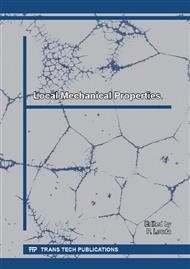p.111
p.115
p.121
p.126
p.130
p.134
p.138
p.142
p.146
Testing of Tensile Properties of Carbon Prepreg Composite Rods with Adding of a Non-Composite Part
Abstract:
The global development of carbon composite materials has been devoting constantly in still more companies and research institutions. Pre-saturated fabrics known as prepregs have a significant position in this field. The common problem of many worldwide authors is how to determine their tensile strength. The problem with tensile load is mainly due to the extremely high strength of fibers filaments and structural fragility of the thin width of formed profiles. Therefore, indirect methods are usually used. They are based on a determination of the resonant frequencies or on a conversion of values obtained e.g. with bending test. In our case, some experiments have been based on the idea of added a non-composite material into the final structure. The aim of this work was also to find an appropriate modification of a surface of the additional element with regard to a mutual interaction, surface microstructure and mechanical properties of the resulting composite part.
Info:
Periodical:
Pages:
130-133
Citation:
Online since:
July 2016
Authors:
Keywords:
Price:
Сopyright:
© 2016 Trans Tech Publications Ltd. All Rights Reserved
Share:
Citation:


